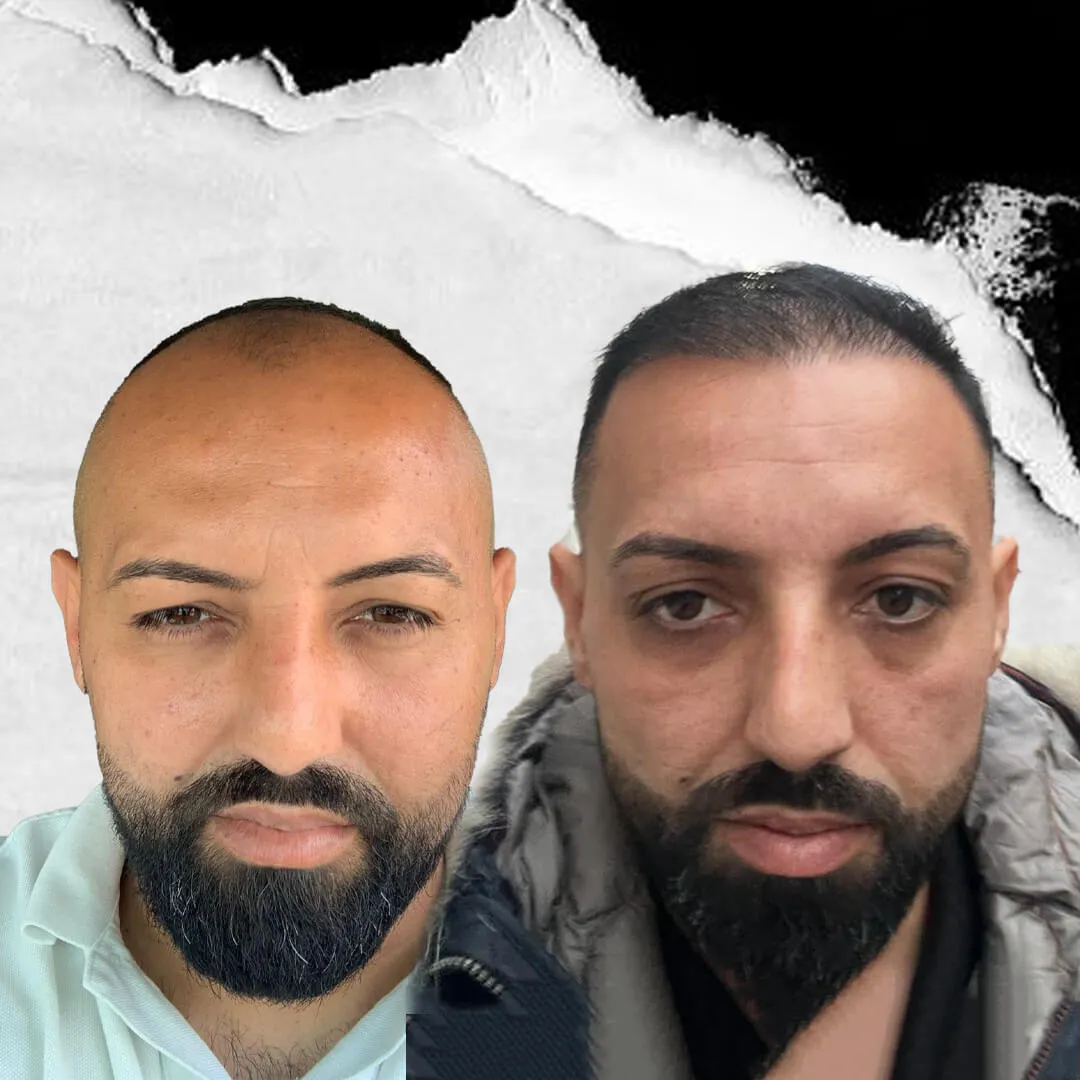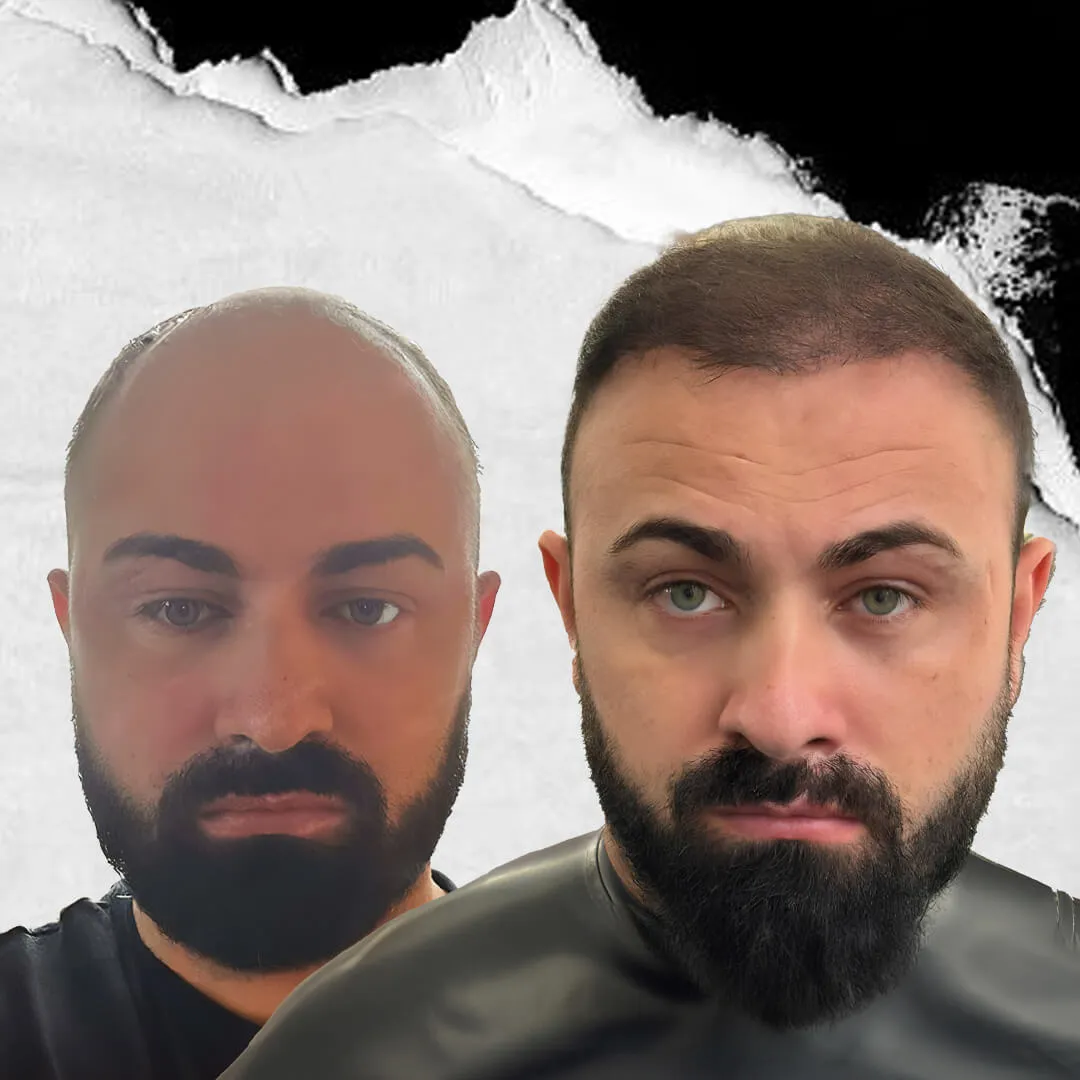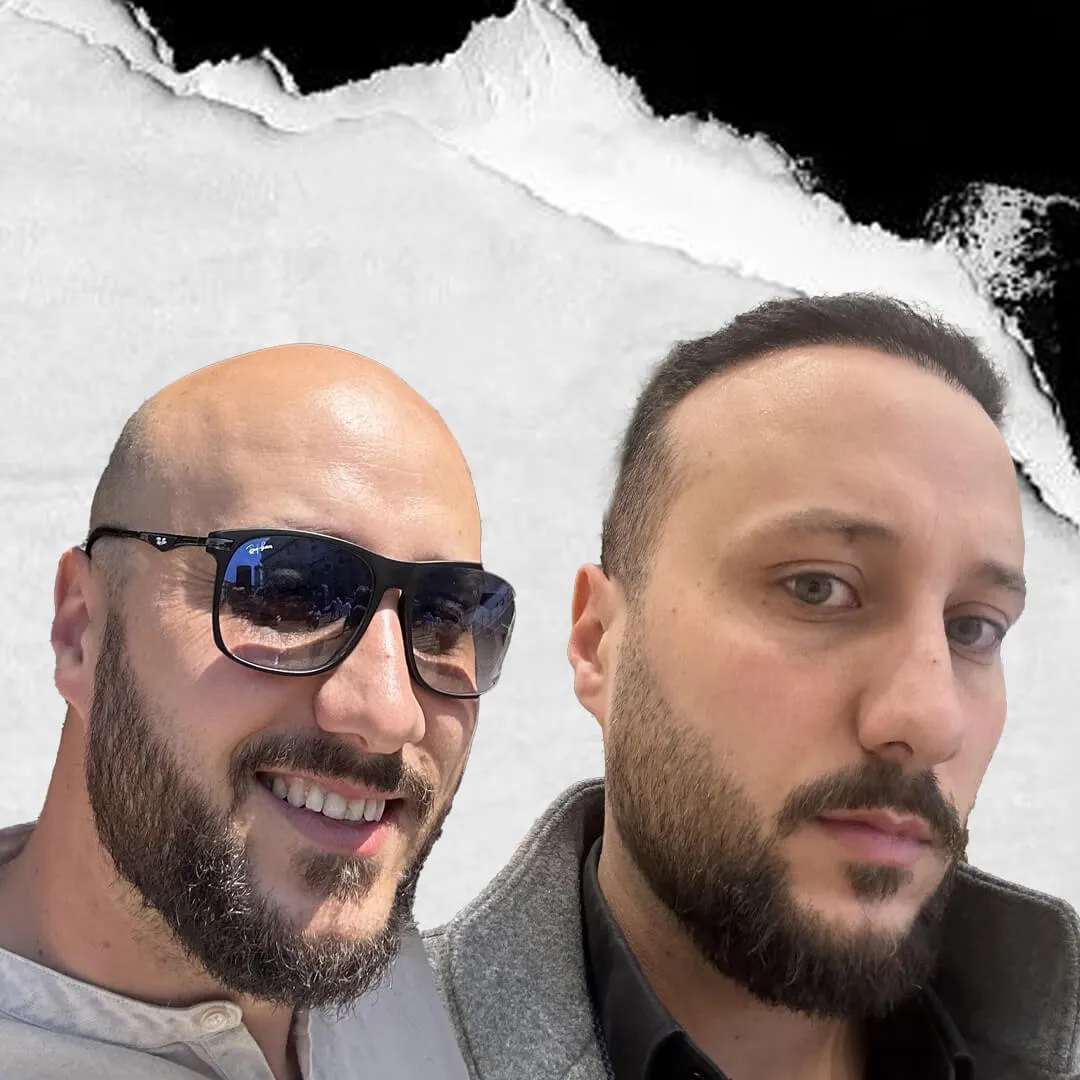DHI, offered by our hair transplant center in Turkey, is a cutting edge technique that creates natural looking results with less recovery time by implanting hair directly into the recipient area without the need for incisions. In contrast, FUE hair transplant ensures accuracy and less scarring by removing individual hair follicles from the donor area and our hair transplant center in Turkey’s Sapphire Micro FUE uses sapphire blades to harvest hair grafts even more precisely and effectively, taking FUE hair transplant to a new level.
There are many benefits associated with these methods, such as new hair growth and successful Turkey hair transplant outcomes. Hair transplants in Turkey provide minimum discomfort both before and after the treatment, fast recovery durations, and outcomes that seem natural, often leading to highly successful hair transplant results. Better results are also guaranteed by the application of cutting edge technology, such as sapphire blades, which also increase graft survival rates, contributing to the overall success of the hair transplant Istanbul experience.
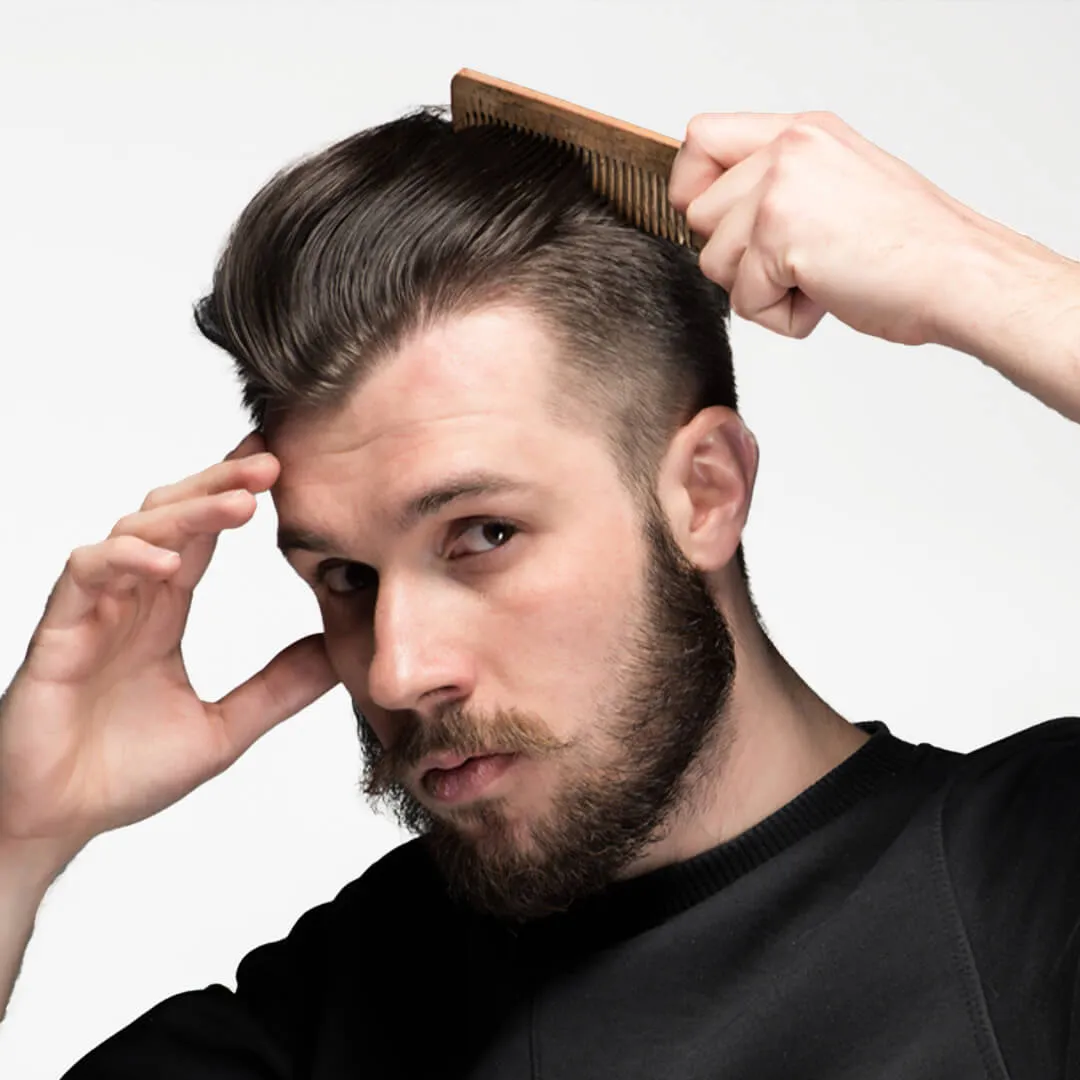
Are you trying to get your confidence and hair back? Consider our hair transplant packages in Istanbul for the best possible chance at successful hair restoration. Look no further than our world class hair transplant center in Turkey, which provides cutting edge methods including Sapphire Micro FUE, Follicular Unit Extraction (FUE) and Direct Hair Implantation (DHI). International Plus organization is the best destination for hair transplantation in Turkey, providing maximum grafts and utilizing methods including without shaving, both for women and men.
You may get the thicker, more natural looking hair you want with the best hair transplant in Istanbul, Turkey, courtesy of our state of the art methods, hair transplant surgeons, and all encompassing care. To arrange your consultation at our hair restoration center in Istanbul, Turkey, and start down the path to a more confident you with new hair, get in touch with us right now and explore our range of hair transplant packages.
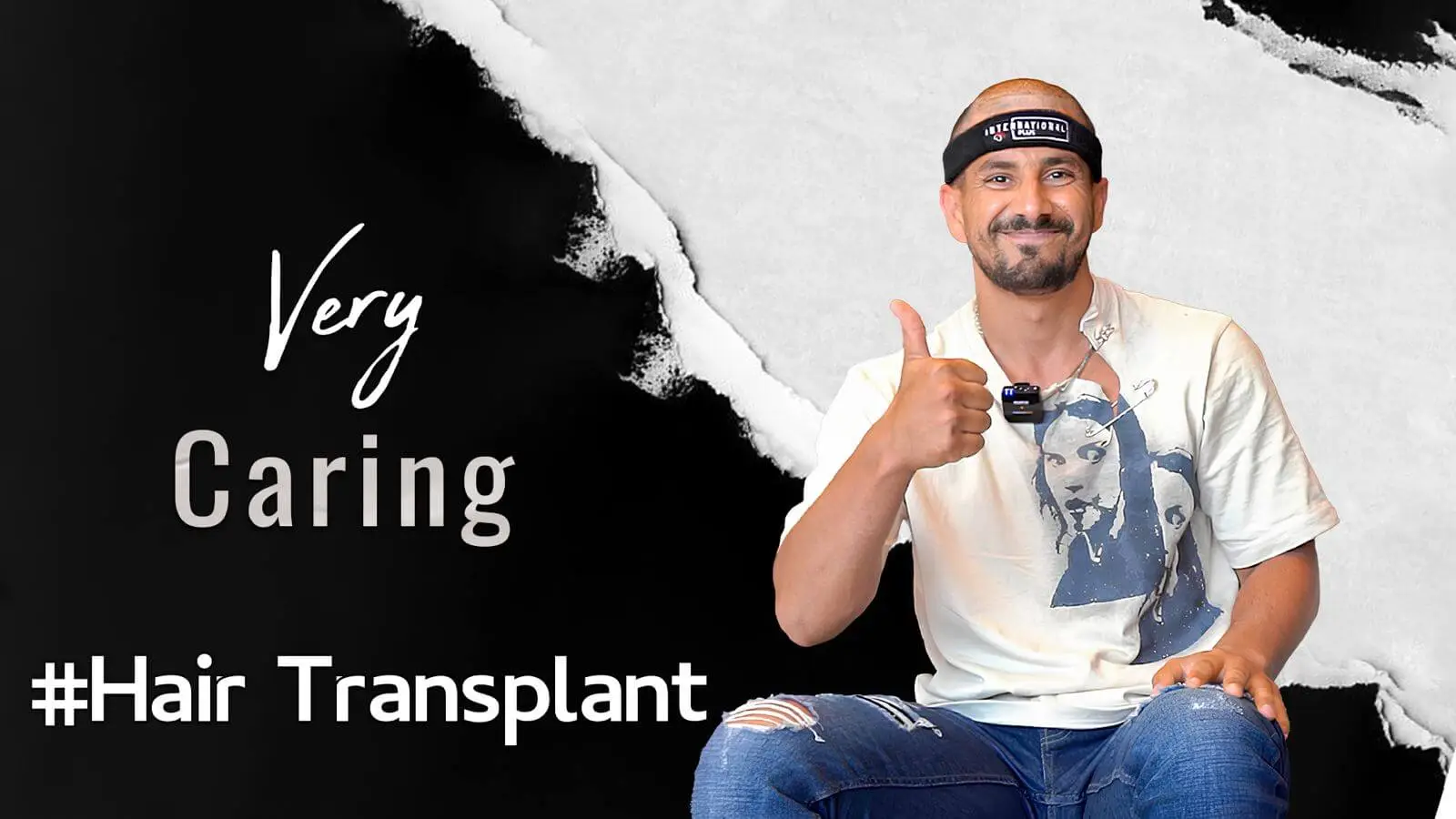
At International Plus organization, we offer unparalleled expertise and state of the art facilities for hair transplant treatment in Istanbul, Turkey as a leading hair transplant center. Our team of experienced professionals is dedicated to providing personalized care and achieving natural looking results for every patient. We prioritize patient satisfaction and safety, ensuring a comfortable and stress free experience from consultation to recovery. With our commitment to excellence and advanced techniques, International Plus organization is the premier choice for individuals seeking effective and affordable hair transplant solutions in Istanbul, Turkey.
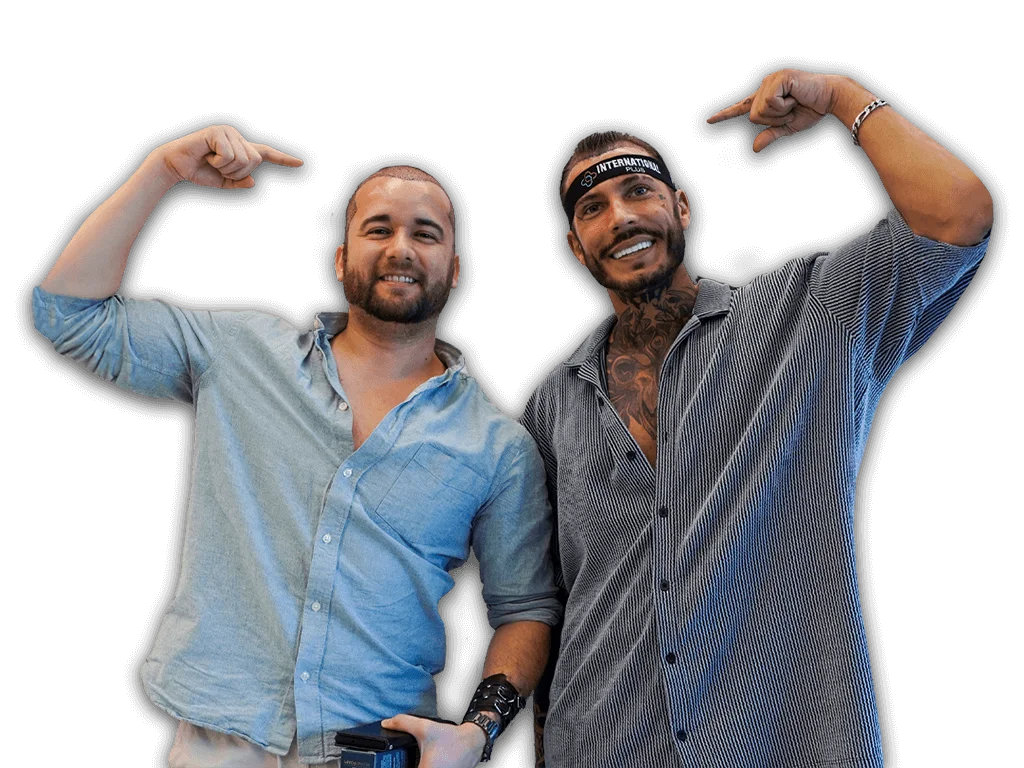
Hair transplant procedures offer numerous advantages, including permanent hair restoration, improved self esteem and a natural looking appearance. Unlike temporary solutions like wigs or hairpieces, hair transplants provide long term results that blend seamlessly with existing hair. With modern techniques such as Follicular Unit Extraction (FUE) and Direct Hair Implantation (DHI) and SAPPHIRE FUE hair transplant, patients can achieve fuller, thicker hair with minimal downtime and no visible scarring.
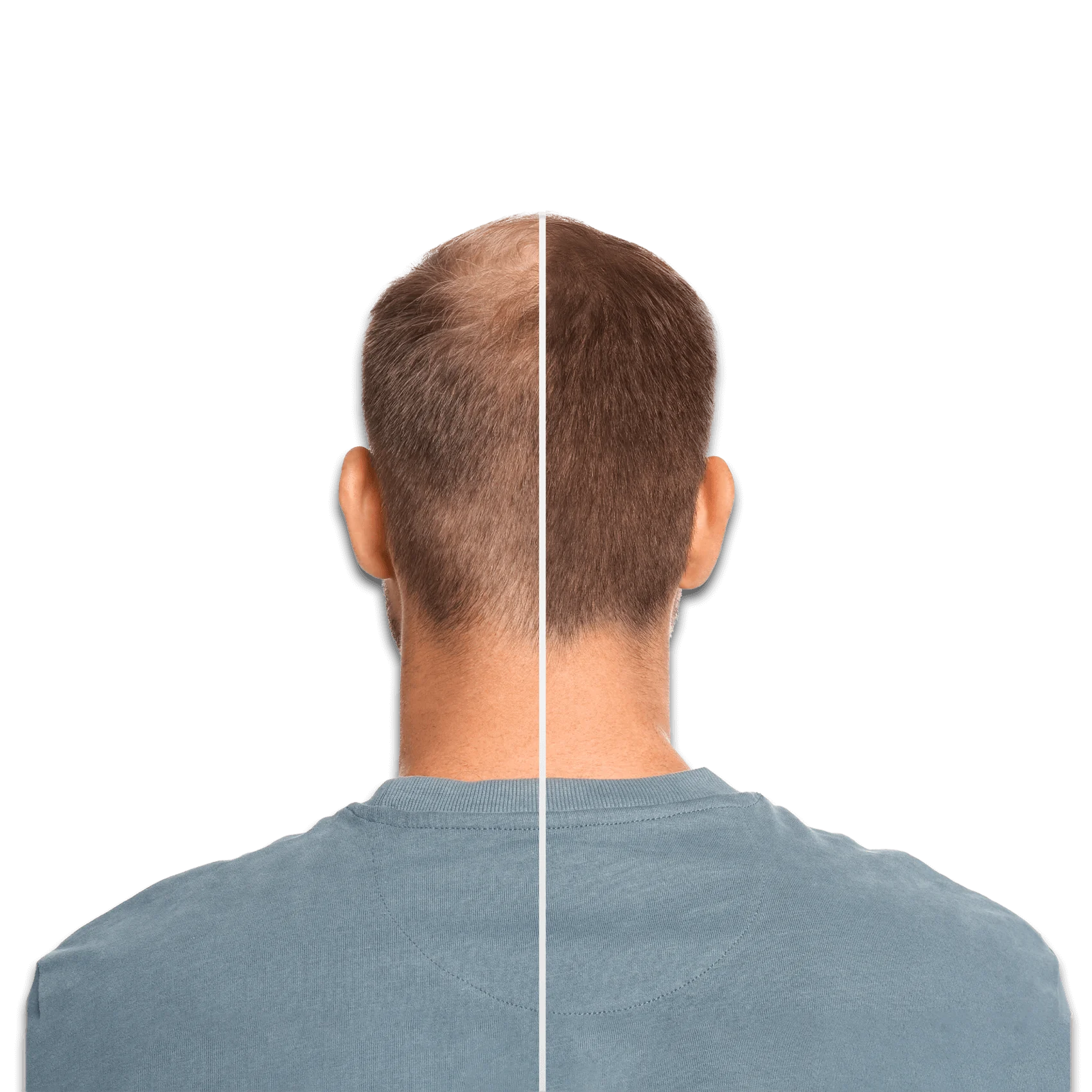
The price of a complete hair transplant in Turkey varies according to the center, the method and the quantity of grafts required. In general, Turkey has reasonable costs when compared to other countires, especially European countires like UK, France, Germany, Netherlands, which draws those looking for high quality hair transplant operations at a reasonable price.

Ideal candidates for hair transplant procedures are individuals experiencing hair loss due to genetics, aging, or other factors. Good candidates should have sufficient donor hair which will be the extracted hair for the field of hair transplantation, good overall health and realistic expectations about the results. At International Plus organization, our experienced professionals will evaluate each patient’s candidacy during a thorough consultation to determine the best course of action for their individual needs. The area of hair affected by hair loss, the extent of your hair loss and the pattern hair loss are examined by the doctor. The most appropriate treatment method is determined by our specialist doctors.
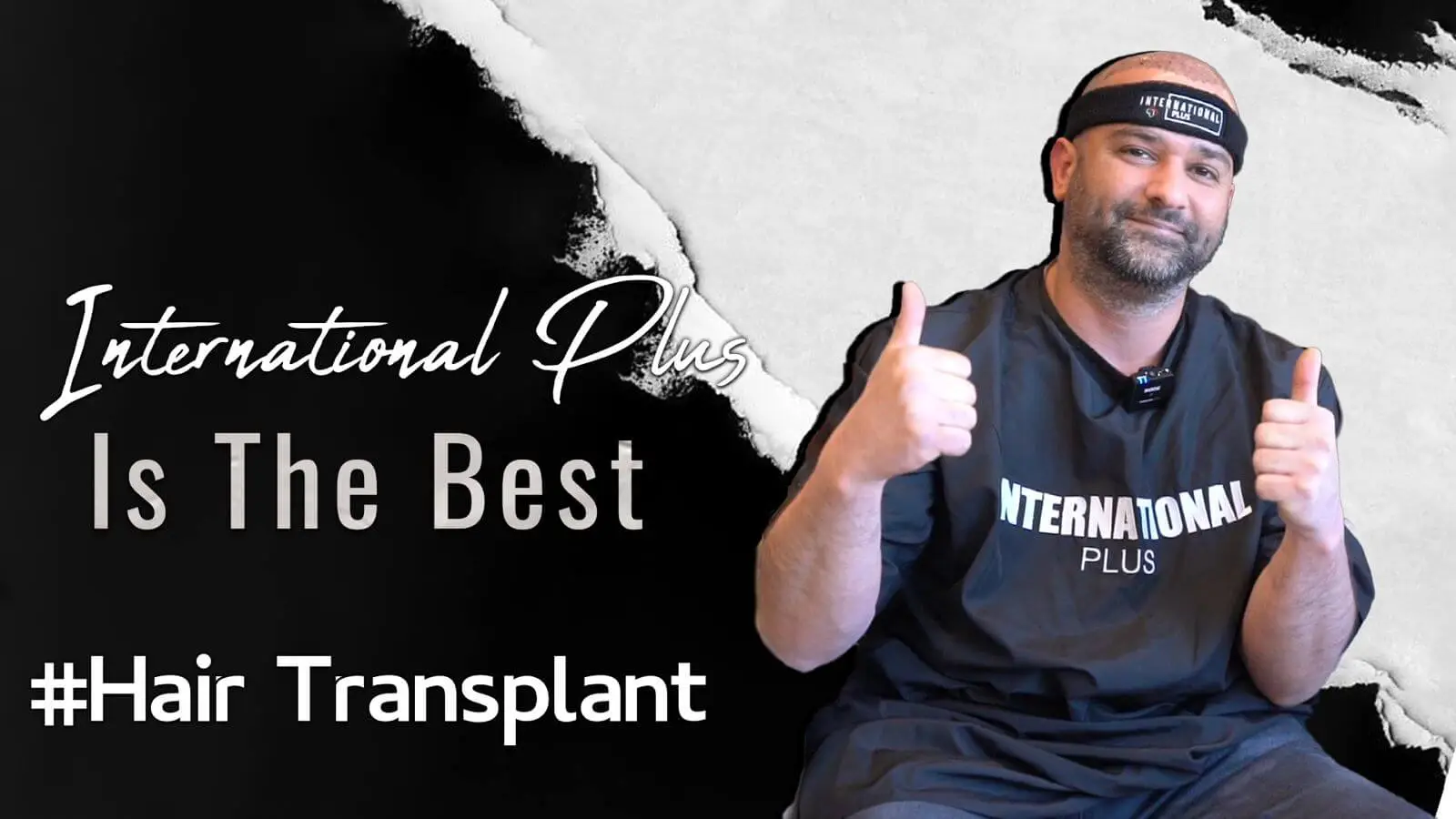
A few requirements must be fulfilled before having any kind of hair transplantation, including comprehensive hair analysis. Reasonable expectations, adequate donor hair follicles and being in a good general health are the three best attributes for ideal candidates seeking the best hair transplant in Turkey. Our skilled surgical team in the hair transplant center will assess your unique requirements and develop a customized hair transplant procedure plan just for you.
In Istanbul, Turkey, the cost of hair transplant procedures varies according to the technique selected, the degree of hair loss and additional considerations. But in contrast to a lot of other nations, our hair transplant center in Turkey offers services like hair transplant operations that are quite affordable without sacrificing effectiveness or quality.
Hair growth, increased self confidence and a natural looking appearance are benefits of the best hair transplant surgeries in Turkey. But, it’s important to take into account any possible drawbacks of the hair transplant procedure, like the possibility of infection, scarring and the requirement for several sessions to get the best result.
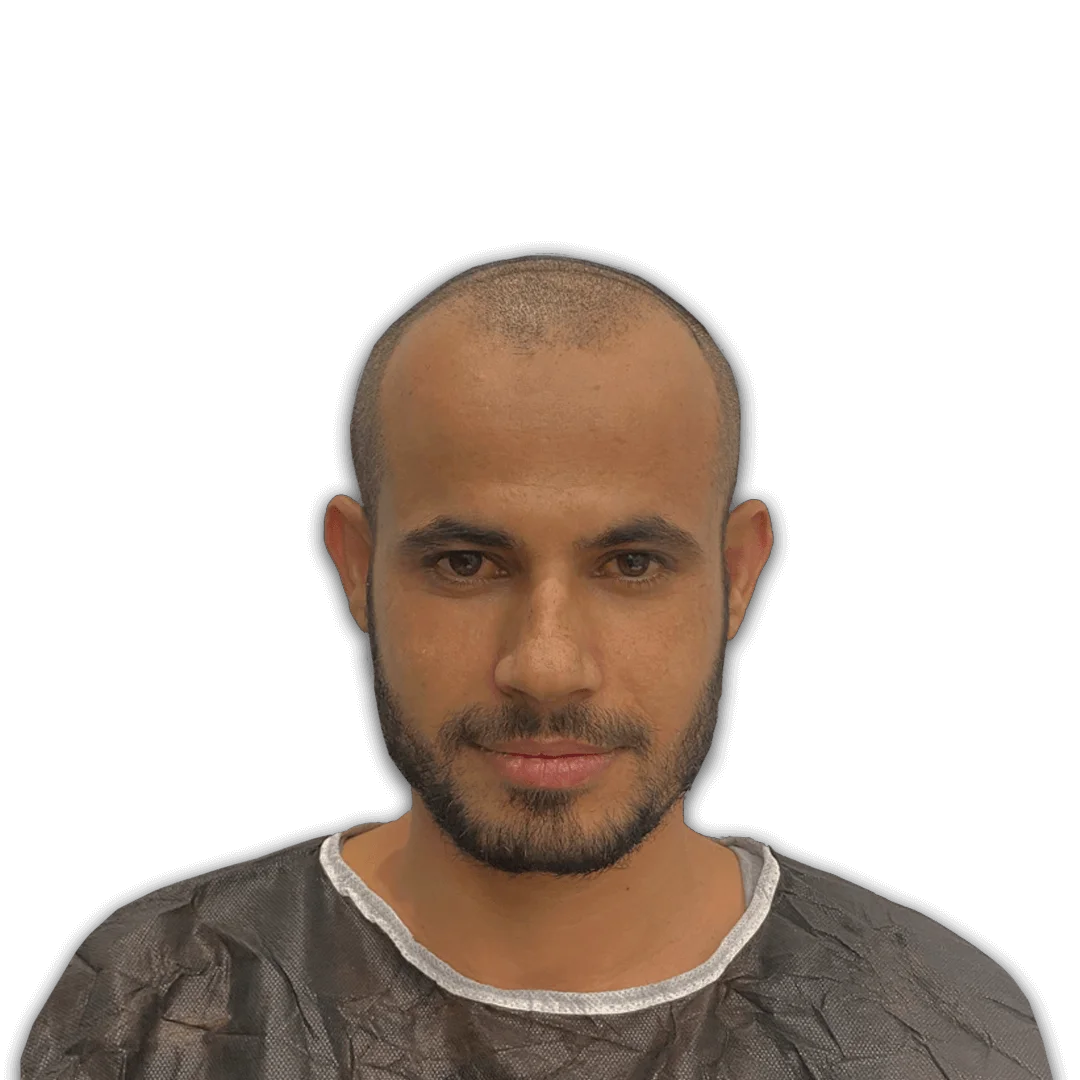
After a hair transplant operation, proper graft care is essential for good results, epitomizing the importance of post operative care in the hair transplant Turkey procedure. To ensure optimal healing and hair graft survival for the best hair transplant outcome, it’s critical to avoid intense exercise, shield the scalp from the sun, and adhere to our team’s post operative care guidelines.
Patients should anticipate some initial shedding of the transplanted hair following the hair transplant operation, which will then be followed by a new hair growth over the next few months. Our staff at the best hair transplant center will offer advice on how to take care of your newly grown hair and when complete results should be anticipated.
Knowing who is eligible for a hair transplant and the many methods that are available, including the sapphire FUE method, is crucial if you’re thinking about getting one in Istanbul, Turkey. Turkey is a well liked location recognized for its top notch hair transplant treatments, whether you’re searching for the greatest hair transplant center or more reasonably priced hair transplant solutions.
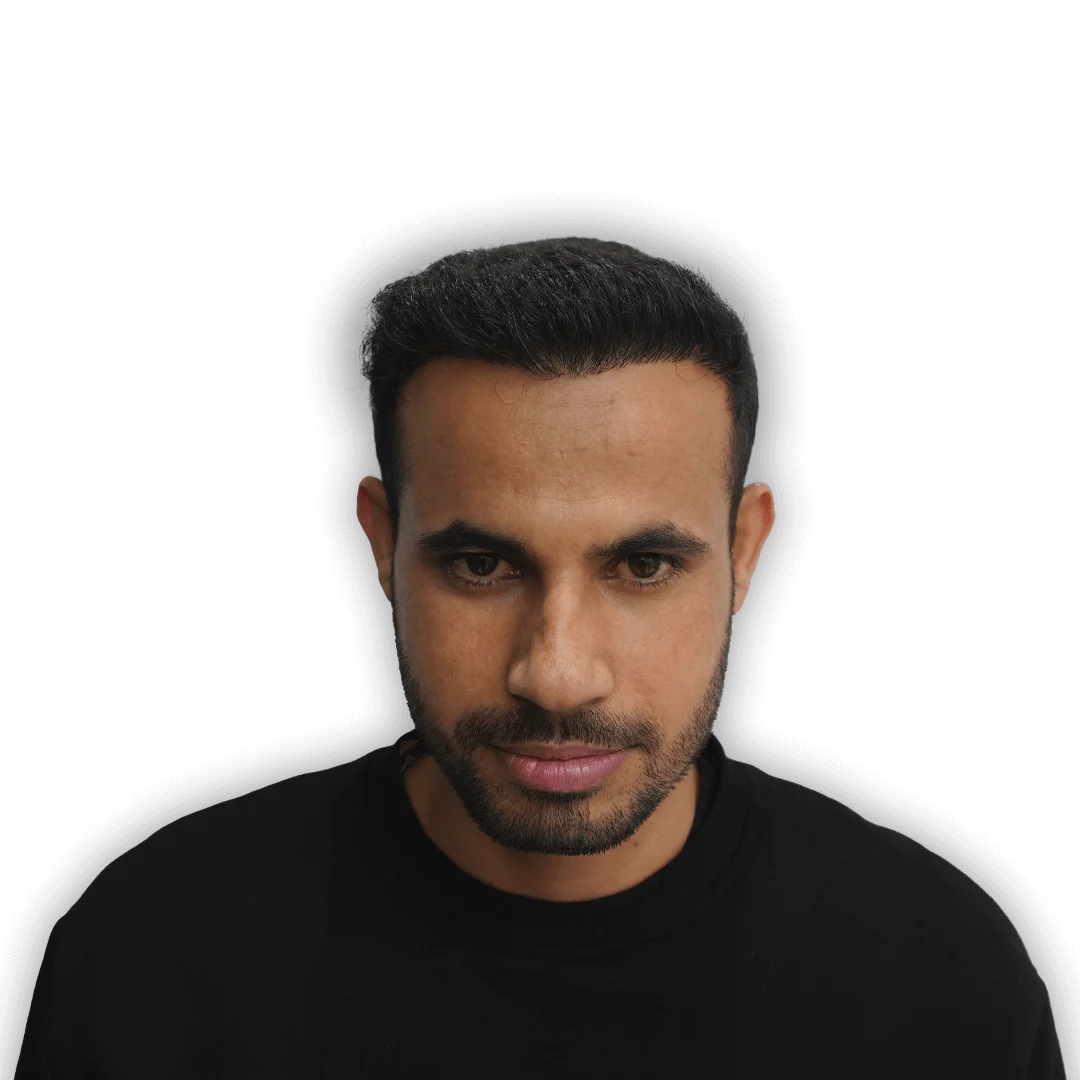

The Laboratory team will take a blood test to check whether the patient is suitable for the surgery or not.
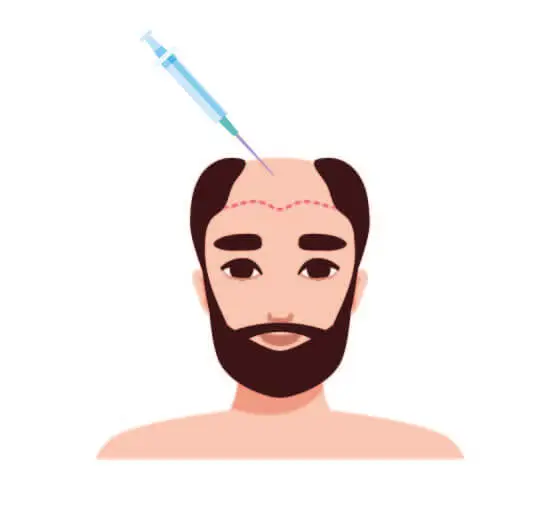
To be sure that our patients will never experience pain and discomfort during surgery, our doctors administer local anesthesia, so there is no need to use general anesthesia for a hair transplant because the procedure only involves mild intervention on the skin and can be managed perfectly with local anesthetics.
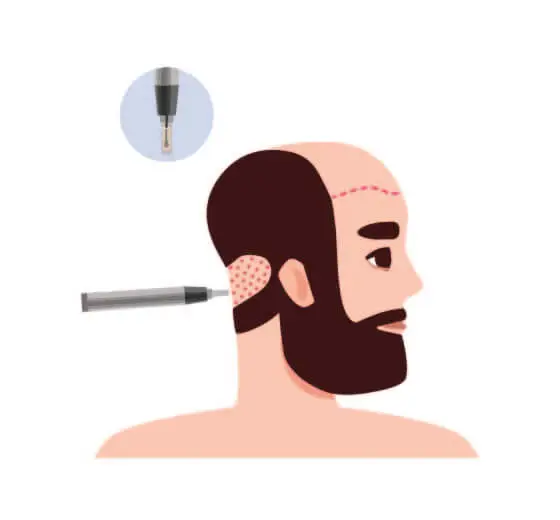
Before extracting the grafts, we take into consideration the case of the patient and which type of hair transplant method will be appropriate for his case (standard FUE, SAPPHIRE FUE, and DHI ). Than the micromotor device extract grafts from the donor area to be placed in the area where hair replacement is desired.
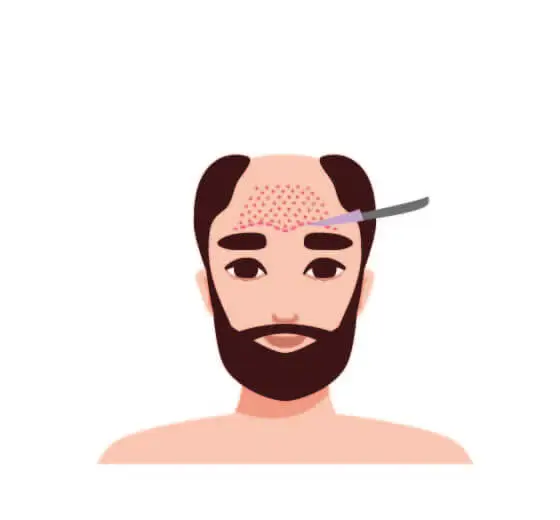
Opening the channels is one of the most important stages of hair transplantation as it affects the naturalness of the hair. In this level, we create incisions at the same angle as the natural hair to ensure natural results for hair transplant.
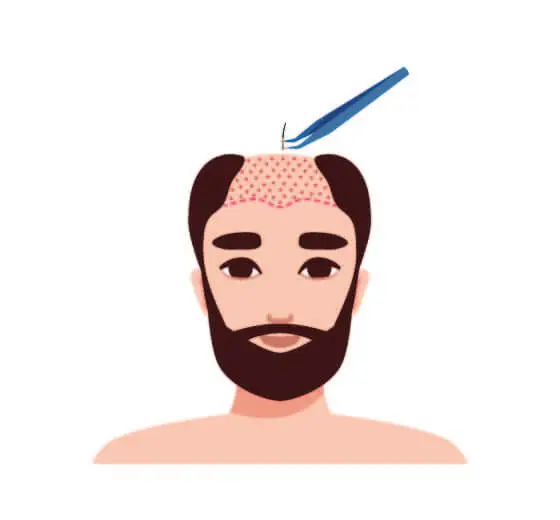
In this final step, we transplant hair follicles using the instrument suitable to the type of hair transplant previously chosen. Depending on a number of transplanted grafts and size of the baldness area, the surgery takes around 6 to 8 hours.

When the procedure is finished there will be a bandage on the donor area to prevent swelling of the face after hair transplant. Therefore, the patient receives follow up recommendations and can return to the daily life. Finally, the results of hair transplant surgery can improve your appearance and your self confidence.
FUE (Follicles Unit Extraction) method, which is operated using advanced technology that is used in hair transplantation. In this method, a device called micromotor is used to extract the hair follicles from the donor area. Through to this device, the graft extraction process takes a short time and it will prevent swelling in the donor area. In the hair transplantation process performed with the FUE method, the number of hair follicles transplanted, and the desired result is achieved by 95%.
After the region is prepared for the procedure, the hair follicles are collected one by one. Each of these roots, called graft, has an average of 2-3 hairs. Small incisions are made to transfer the hair follicles that are collected one by one to the balding area.
The size and depth of these incisions should be compatible with the grafts. The angle of the opened channels should be adjusted very well to capture the natural appearance. The roots taken at this last stage is carefully placed one by one in the opened channels.
In other words, hair transplantation is the process of transferring healthy and strong hair follicles, usually taken from the back of the head to be transferred to the balding area.
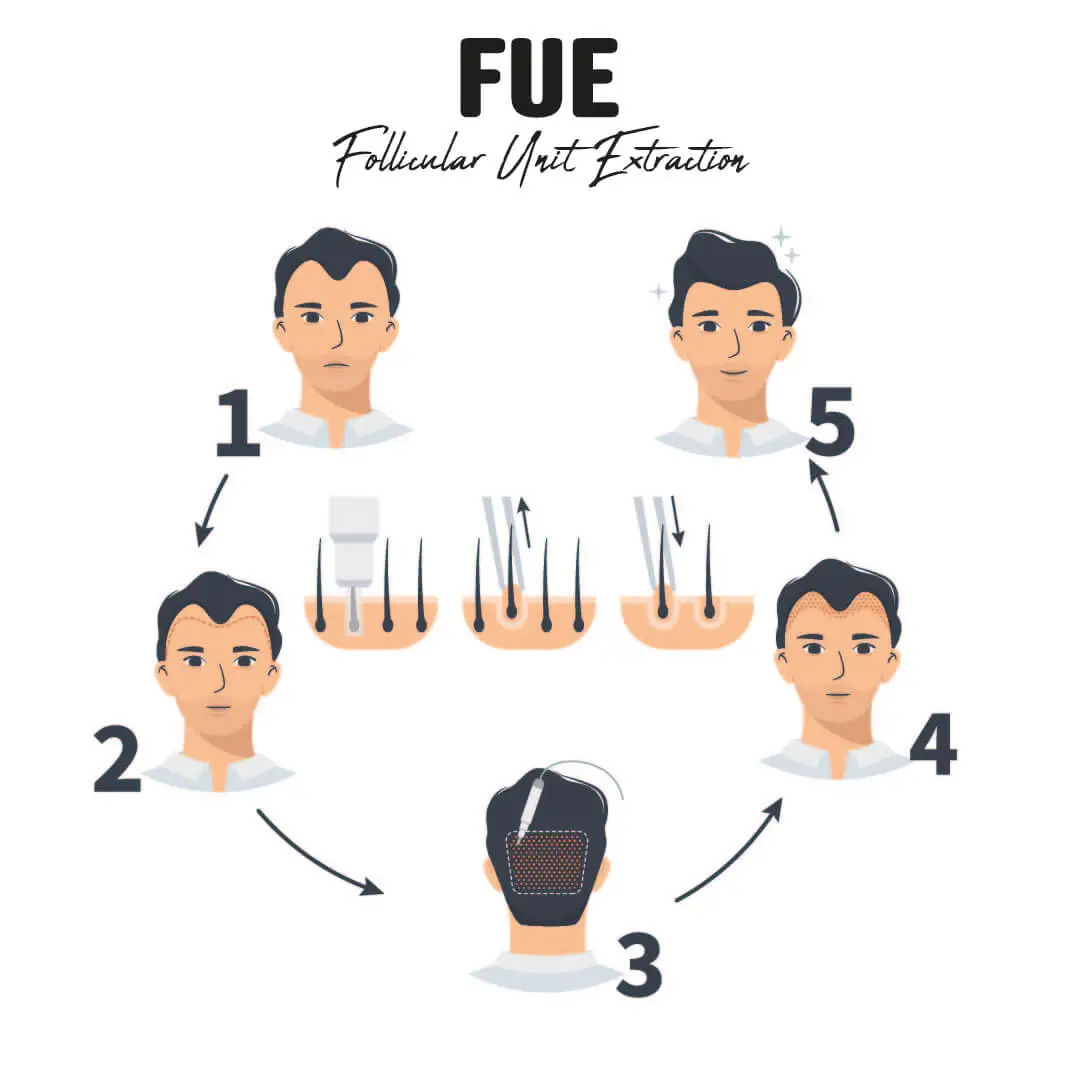
DHI hair transplantation technique is a slightly more developed version of the FUE hair transplantation technique regarding hair follicle uptake and transplantation. Grafts (hair follicles) are extracted from the donor area (rarely beard or chest) with the help of micro motors and planted in the baldness area.
The difference of the DHI hair transplantation technique from other techniques starts after this point. The special technique used in the DHI hair transplantation technique works with much more advanced technology than the techniques available today. In this technique, the first goal is to carry out a lifelong guaranteed hair transplant operation without using scalpels or stitches and making holes in the scalp.
With this procedure, which is completed in a single session, it is possible to have more intense hair that looks more natural.The primary distinction in implementing this technique lies in the utilization of a recently developed hair transplant procedure perfected over the last few years.The grafts are taken with the surgical pen, whose thickness varies between 0.6 mm and 1 mm, and used into the scalp without opening any stitches.
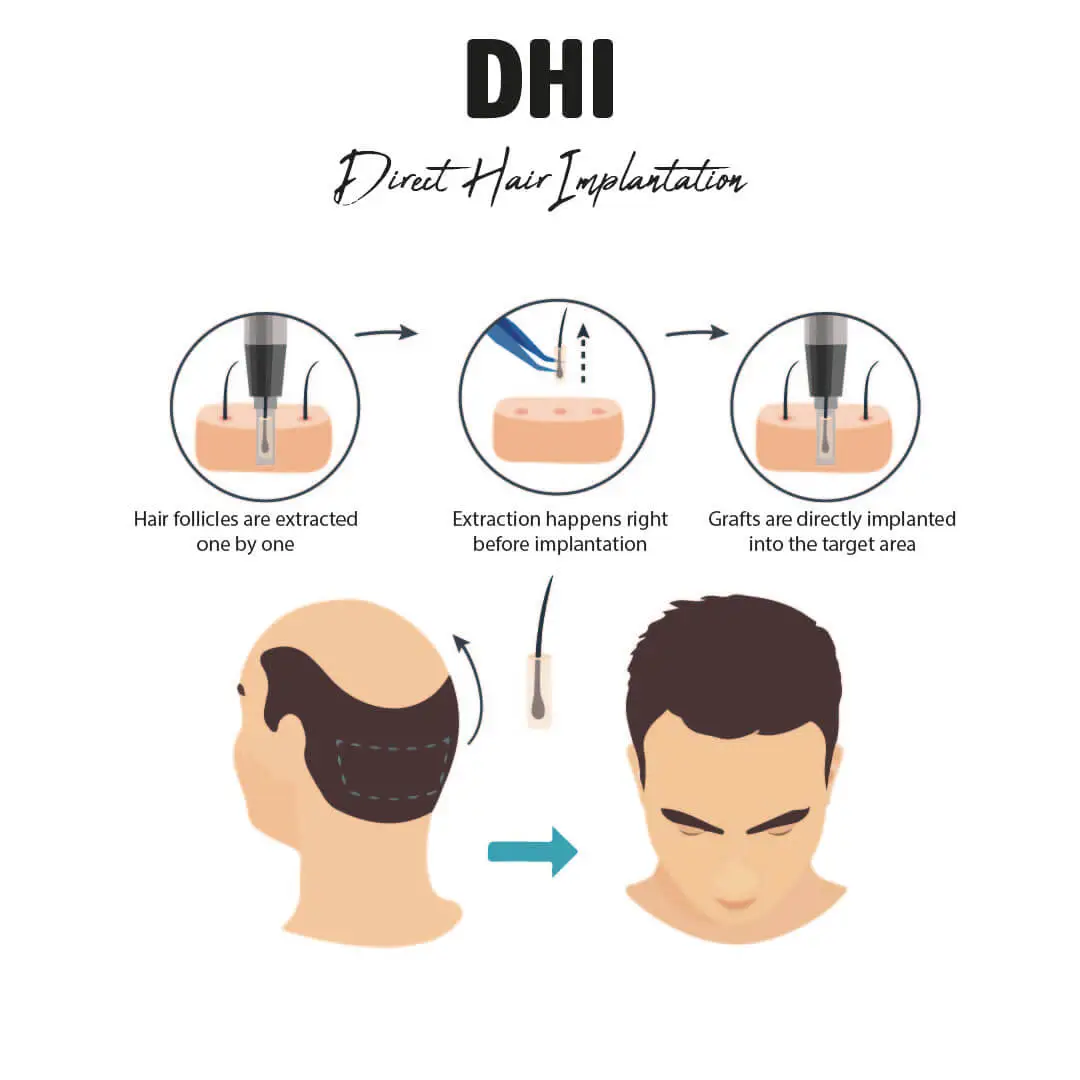
Sapphire hair transplantation is a new hair transplantation technique, which is used for opening channels by using natural gemstone, that is, sapphire crystal, and does not harm skin texture.
Sapphire hair transplantation is a technique for opening a channel and has a sapphire shape like its name.
In other grooving methods, the slitting method, namely plain and metal, is used, while the sapphire technique uses natural mineral and gemstones.
No damage was found in hair transplants made with sapphire technique. Thus, the sapphire technique is very safe in terms of health.
Thanks to the sapphire hair transplantation, there is less bleeding in the hair transplantation and it heals faster and gives more natural results.
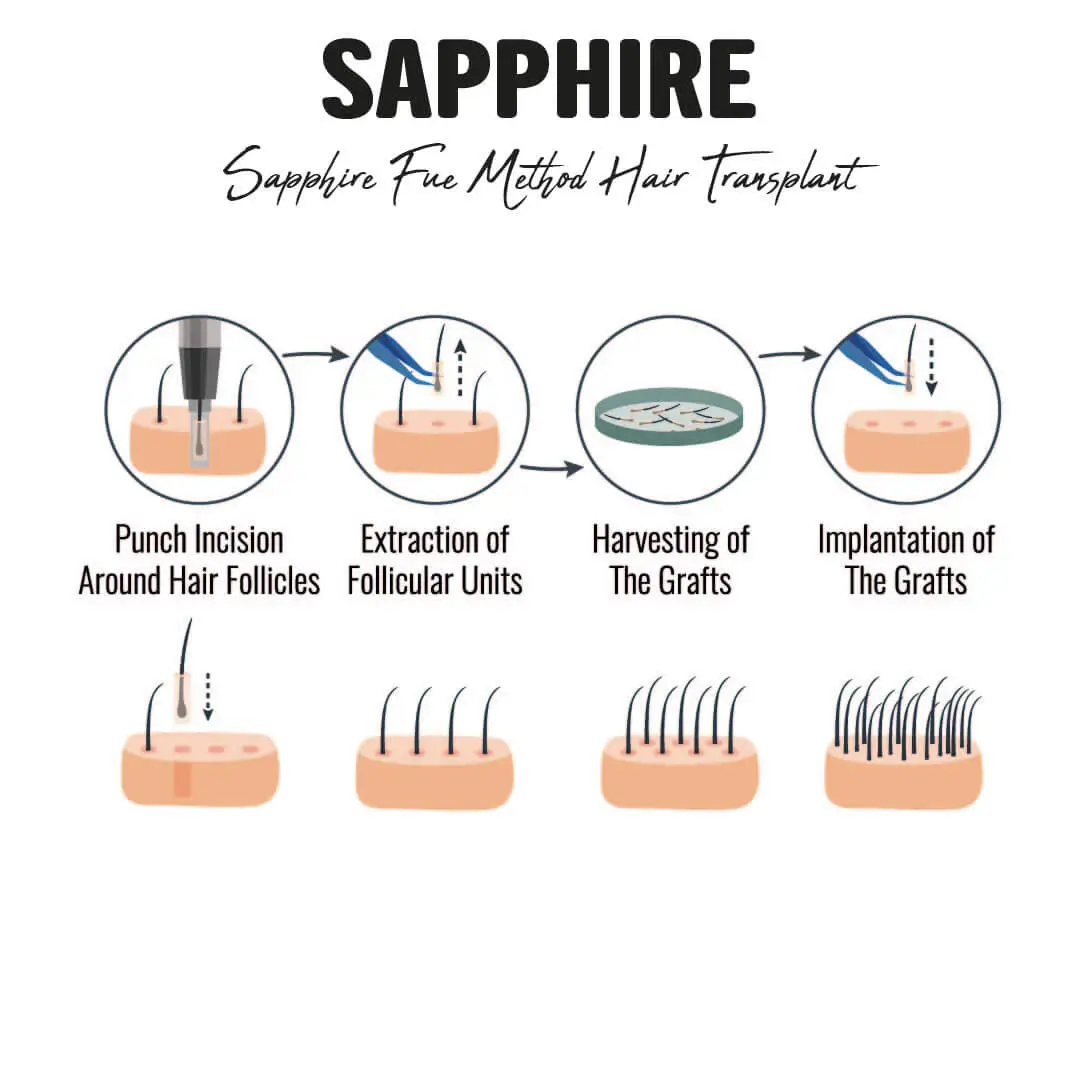

The price of a complete Hair Transplant in Turkey varies according to the clinic, the method and the quantity of grafts required. In general, Turkey has reasonable costs when compared to other nations, which draws those looking for high quality Hair Transplant operations at a reasonable price.
Turkey is widely recognized for its proficiency in Hair Transplant operations, owing to its abundance of skilled surgeons and cutting edge facilities. The nation has established itself as a top hair transplant destination by providing top notch outcomes at affordable costs. Turkey is undoubtedly a top alternative for anybody looking for efficient and reasonably priced Hair Transplant solutions because of its cutting edge procedures and first rate facilities.
Due to a number of circumstances, Hair Transplant treatments are comparatively less expensive in Turkey than in other nations. These include more competitive clinics, better currency rates and reduced operating expenses. The government of Turkey also aggressively encourages medical travel, which lowers the cost of Hair Transplant operations.
Yes, results from contemporary Hair Transplant procedures like Direct Hair Implantation (DHI) and Follicular Unit Extraction (FUE) seem real. Trained doctors carefully position the new hair follicles to match the donor natural growth pattern, guaranteeing a smooth transition into the donor hair. The results of Hair Transplants can be unnoticeable and lifelike with the correct skill and technique.
Yes, patients are still able to style and manage their hair as they choose because the transplanted hair follicles develop just like natural hair. Transplanted hair usually starts to come back in a few months after the initial shedding phase, getting longer over time. With their transplanted hair, patients can profit from adaptability and long term advantages.
For the first few weeks following a Hair Transplant, it is advised to refrain from donning headgear or hats that are too tight to allow the scalp to heal correctly. Patients can safely resume wearing hats as requested once the healing process is finished and any scabs have come off. Nonetheless, in order to prevent pressuring the transplanted hair follicles, it is imperative to select hats that fit loosely.
Since transplanted hair follicles are usually resistant to the effects of hair loss, Hair Transplants provide benefits that last a lifetime. For the remainder of the patient life, the transplanted hair should grow in and act like natural hair. To guarantee that the benefits last, it is crucial to adhere to the post operative care guidelines and preserve the general health of the scalp.
The size of the transplant area, the desired hair density and the degree of hair loss all affect how many hair grafts are required for a Hair Transplant. A knowledgeable surgeon will evaluate each patient unique requirements during a consultation and suggest the right amount of grafts to get the best outcomes.
Most Hair Transplant surgeries are carried out under local anesthetic, which reduces patient discomfort. In the days that follow the treatment, patients could feel some mild soreness or discomfort. This can be controlled with painkillers that the surgeon will prescribe. In general, the majority of patients have little pain or discomfort both during and following the Hair Transplant process.
Indeed, Turkey has a well established track record of quality in the Hair Transplant industry and is well acknowledged as a reliable location for the surgery. The nation is home to many certified Hair Transplant clinics, skilled surgeons and strict laws regulating the procedure. Patients seeking Hair Transplants in Turkey can have faith in the high caliber of care and experience that Turkey has to offer.




